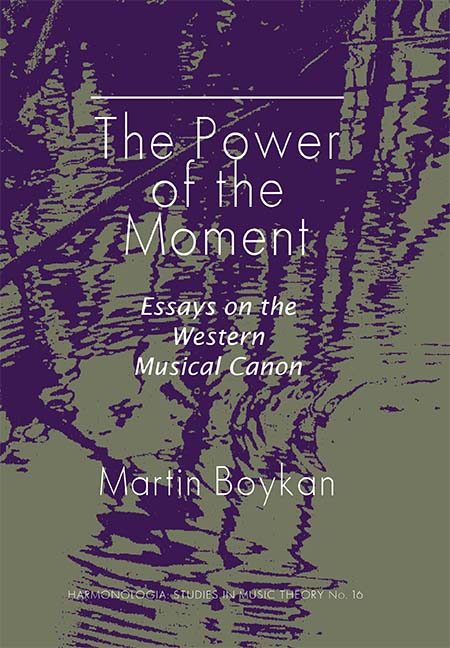Book contents
- Frontmatter
- Contents
- Acknowledgements
- Martin Boykan Biography
- I Introduction: Some Words About Theory
- II The Power of The Moment: The Hammerklavier and the Archduke
- III Voice and Piano in Dialogue: Seven Songs from the Winterreise
- IV A Recurrent Tonality: The Meaning of the Kiss in Verdi's Otello
- V Resetting the Clock: The Scherzo of Beethoven's Fifth
- VI The Power of Every Moment: Musical Continuity in J. S. Bach
- VII Coda
IV - A Recurrent Tonality: The Meaning of the Kiss in Verdi's Otello
- Frontmatter
- Contents
- Acknowledgements
- Martin Boykan Biography
- I Introduction: Some Words About Theory
- II The Power of The Moment: The Hammerklavier and the Archduke
- III Voice and Piano in Dialogue: Seven Songs from the Winterreise
- IV A Recurrent Tonality: The Meaning of the Kiss in Verdi's Otello
- V Resetting the Clock: The Scherzo of Beethoven's Fifth
- VI The Power of Every Moment: Musical Continuity in J. S. Bach
- VII Coda
Summary
As we have seen with the Hammerklavier Sonata and the Archduke Trio, a tonal plan is only a thread in a very complicated weave of surface events, narrative issues and long-range voice-leading. Widely different effects can be obtained from an identical series of tonalities. But even if we grant that the meaning of a tonal relationship depends heavily on its surroundings, it still seems inconceivable that we could be oblivious to the recurrence of a tonality within the same piece. We take it for granted that we would always remember its previous incarnation, and that we can rely on that memory to shape our understanding of its recurrence.
No matter how axiomatic this statement may seem, we have to confront the fact that no less a work than the first act of Verdi's Otello appears to disregard it. It will be remembered that this act divides into two very distinct parts. In the first part we encounter the public world, with two great choruses celebrating the military victory of the Venetians. The second part, a total contrast, takes us into the private realm for the extended love duet of Otello and Desdemona. Tonalities are specifically chosen to dramatize this contrast. The choruses of celebration are both set in E, with related keys for the other set pieces that involve the crowd. As soon as night falls and the stage begins to empty, the flat keys are introduced, and only those keys will be heard for the remainder of the act, with the exception of the passage that leads to the lovers’ kiss and the kiss itself which is set, of all things, in E-major! If we happen to have followed the tonalities in the course of a performance, we might wonder what that moment of profound peace had to do with the storm that destroyed the Turkish fleet.
At this point, I can imagine a strong objection. It is unacceptable, we will be told, to compare a work for the theater with a work for the concert hall.
- Type
- Chapter
- Information
- The Power of the MomentEssays on the Western Musical Canon, pp. 61 - 80Publisher: Boydell & BrewerPrint publication year: 2011

